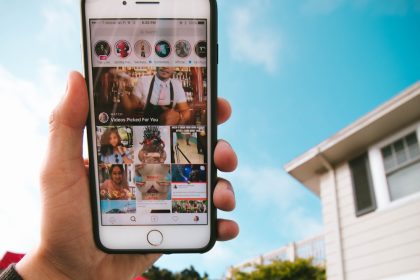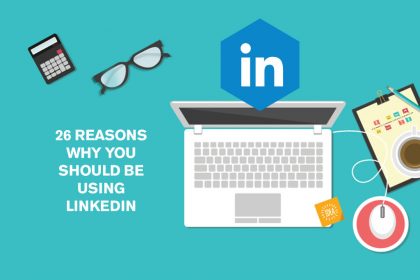Five ways I went wrong with Twitter (and how I fixed them)
Ever wonder why some people just seem to get Twitter, while you find it so hard to grow your own followers and engagement?
When we first ventured onto Twitter, we got it all wrong (as you can read here in our beginner’s guide to Twitter). It wasn’t until we invested in expert help that we finally understood how it worked.
And our experience isn’t unique. In fact, we’ve seen many businesses go through the same learning curve. Now, to help you avoid some of the most common pitfalls of Twitter, freelance marketing consultant Helen Cox shares five mistakes she made when she first started using it, and how she fixed them.
Five ways I went wrong with Twitter (and how I fixed them)
As a marketing business owner, I researched thoroughly before using social media. I read posts on how to get it up and running and read all the rules, but it was all just falling flat. Nothing was working.
So I started looking in to why it wasn’t working, and discovered five ways I was going wrong. And the more I looked, I could see other businesses getting them wrong too.
So, in case it helps you too, here are the mistakes I was making, and how I fixed them.
1) I got my content wrong
My aim on Twitter is to be been seen as an expert in marketing, and demonstrate that I can share content relevant to the community. But when I first started using Twitter I shared content that was really meant for the marketing community – people who knew what it is and how to do it.
But I wanted my audience to be small businesses, women in business and small professional service firms. These guys don’t know what a reengagement campaign is – they just want to know how to send a marketing email.
So I started sharing content that was meant for my intended audience – simple, back to basics, marketing advice. And I finally started getting noticed by the right people.
My tip: Work out who your intended audience is on Twitter, then what they want or need to know, and source and share the right type of content.
2) I wasn’t using the right hashtags
Off the back of this insight, I then realised that the hashtags that I was using were also attracting attention of those with a professional interest in marketing, not small businesses.
Again this wasn’t right. After a little bit of research I found, used and tweaked the hashtags that I used in my tweets to see what gained me the most exposure for my audience.
With a clearer view of my audience and how to reach them, I’ve gained more likes, retweets and follows on my account, from the type of people that I want!
I’ve also found that putting up to five hashtags in my tweets really helps boast their popularity too. The general wisdom says to use no more than three, but that’s how it has been working for me, and I’m continuing to use five.
My tip: If you use the right hashtags for your audience they will find your content. You can you use tools like hashtagify.me to research relevant ones for your industry. And don’t be afraid to use up to five hashtags – it will be okay, I promise!
3) I didn’t have the right follower strategy
Once I was confident I had my content right, I knew that it was time to grow my audience. And that meant following the people that I wanted to follow me.
I wasn’t really doing too much to increase my follow count but then I realised – what’s the point of sharing great content if no one is going to read it?
So again I did some research and started to follow people and business from the accounts that I coveted. I’m based in Kent, so for me that meant following businesses that follow the Kent Chamber of commerce.
Getting a bit more structured about who I was following was a significant help in building an audience that I wanted to get it front of.
My tip: Know who you want to follow and find accounts that have the audience you are after. Follow their followers to build the right audience.
4) I wasn’t engaging enough
So this is the bit that I was a little bit scared of at first. Tweeting people I didn’t know – that feels a bit odd. Should I step out of my comfort zone and start reaching out?
Well I took the plunge and started to say thanks to everyone that followed me – I would take a quick look at their website and say something personal about their website in my tweet. So they knew I’d bothered and I cared.
I wanted to show that I appreciated them, and it paid off. On a couple of occasions people signed up to my email newsletter list just because I made a little effort. They have also been sharing and retweeting more of my content; I can see that I am building up loyalty amongst my followers and that’s a good feeling!
I’ve also started to appreciate and thank anyone who likes or retweets my content, so again building up loyalty, trust and getting people coming back for more.
I literally spend 10 minutes a day firing out tweets, but I can guarantee these 10 mins a day will be worthwhile.
My tip: Put 10 minutes aside each day to engage with the people who follow, retweet and like your content. And wherever possible – make it relevant to them.
5) My feed didn’t have personality
Finally, my Twitter account is automated through buffer. I choose the content that I want to share and then it gets scheduled at the times I have set.
But I soon I realised that my account had no real authenticity or personality. I wasn’t letting myself shine. So I decided to do a few things.
When I engaged with people I added emojis and GIFS to show that I wasn’t just an autobot. Sometimes I even added emojis that were relevant to their business just so they know that I know what their business is about! It just injected a little bit of fun.
I’ve also started to tweet as myself and use the opportunity to run Twitter polls on what my next blog post should be about, ask what types of personal development books people are reading, and even asked whether there were any guest blogging opportunities (which lead me to writing a blog in a well-known women’s network in Ireland).
By putting myself out there a little and tweeting as myself people can start seeing the real me, and it brings some authenticity and personality to my channel.
My tip: Tweet as yourself, ask questions, engage – there is a whole world out there! And use emojis and Gifs to show personality.
So that’s my journey on Twitter so far! I hope it’s helped you and you start reaping the rewards of your effort.
Helen Cox Marketing is a freelance marketing consultancy working with women in business who struggle to find the time and resource to manage their marketing.
She offers a free marketing planning template to everyone that signs up to her mailing list.










